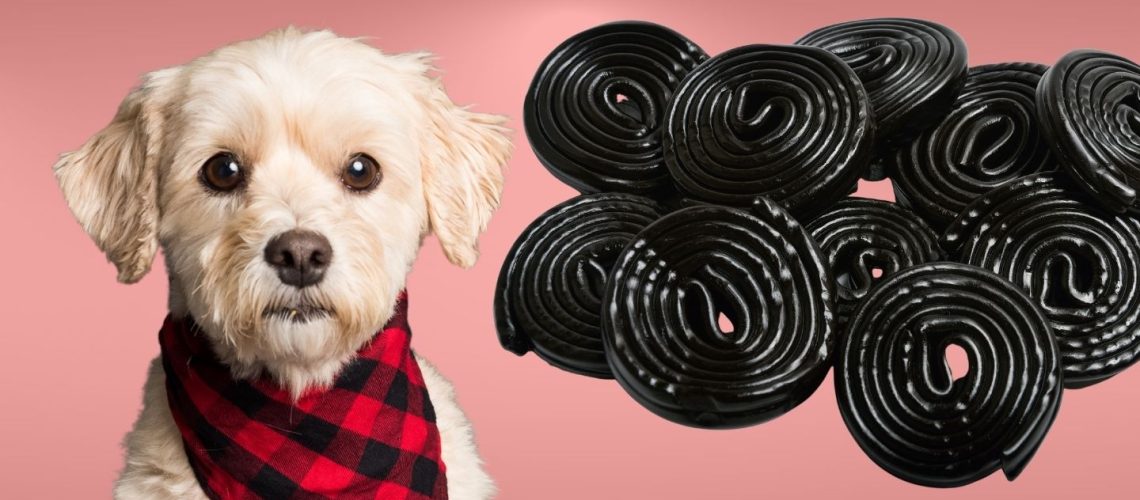The popularity of licorice as a sweet treat is undeniable. However, when it comes to our canine companions, it is important to recognize the risks licorice can pose to their health. The short answer to whether dogs can eat licorice is no. Licorice contains the compound glycyrrhizin, which can be toxic to dogs in large amounts. Eating licorice can cause a range of symptoms in dogs, including vomiting, diarrhea, lethargy, and tremors. In severe cases, it can even cause potentially life-threatening problems such as high blood pressure and heart problems. In this article, we will explore the reasons why licorice is harmful to dogs, the symptoms of licorice toxicity, and how to keep your dog safe from this sweet temptation.
The Ingredients in Licorice
Glycyrrhizin
What is glycyrrhizin
Glycyrrhizin is a compound found in licorice that gives it its characteristic sweetness. However, this compound can also have potentially harmful effects on dogs.
Glycyrrhizin's effects on dogs
Glycyrrhizin can cause the body to retain sodium and lose potassium, which can lead to a range of symptoms in dogs. It causes an increase in blood pressure, and in large amounts, it can be toxic to dogs. In small amounts, licorice may not necessarily be harmful, but it is best to avoid giving it to dogs altogether.
Sugar and artificial sweeteners
The risks of sugar for dogs
Sugar, in general, is not good for dogs, as it can lead to obesity, dental problems, and diabetes. Moreover, sugar contributes to the overall risk of licorice toxicity in dogs.
The dangers of artificial sweeteners, such as xylitol
Some licorice products may contain artificial sweeteners like xylitol, which are extremely toxic to dogs. Ingesting xylitol can cause rapid insulin release, leading to hypoglycemia (low blood sugar) and, in some cases, liver failure.
Symptoms of Licorice Toxicity in Dogs
Gastrointestinal symptoms
Vomiting
Dogs who have ingested licorice may experience vomiting as their body tries to rid itself of the toxic substance.
Diarrhea
Diarrhea is another symptom that can occur in dogs who have consumed licorice, as their digestive system responds to the irritant.
Neurological symptoms
Lethargy
Dogs suffering from licorice toxicity may become lethargic due to the effects of glycyrrhizin, which can impair neurological function.
Tremors
Tremors, or involuntary muscle movements, are another symptom of licorice toxicity in dogs and can indicate a more severe reaction.
Seizures
In extreme cases, dogs may experience seizures due to the neurological effects of glycyrrhizin.
Cardiovascular symptoms
Increased heart rate
The loss of potassium and retention of sodium in dogs who have consumed licorice can lead to an increased heart rate.
High blood pressure
High blood pressure is another possible side effect of licorice consumption in dogs, and it can be dangerous if left untreated.
Treatment for Licorice Toxicity in Dogs
Veterinary attention
Diagnostics
If you suspect that your dog has ingested licorice, it's essential to seek veterinary attention as soon as possible. Your vet will perform a thorough examination and may run diagnostic tests, including blood tests and urinalysis, to determine the severity of the toxicity.
Treatment options
Treatment for licorice toxicity may include medications to control the symptoms, intravenous fluids to correct electrolyte imbalances, and other supportive measures depending on your dog's condition.
Home care and monitoring
How to monitor your dog
If your dog has ingested a small amount of licorice, and your veterinarian has advised monitoring at home, keep a close eye on your dog for any symptoms of toxicity. If you notice any troubling signs, contact your vet immediately.
When to seek additional veterinary care
Seek additional veterinary care if your dog's symptoms worsen or if new symptoms arise that may indicate a more severe reaction to the licorice.
Safe Alternatives to Licorice for Dogs
Dog-safe treats
Choose dog-specific treats that are designed to be safe and healthy for your canine friend.
Fruits and vegetables that are safe for dogs
Some fruits and vegetables, such as apples, carrots, and green beans, can make for healthy and safe treats for dogs.
Other natural chew toys
Consider offering your dog natural chew toys, like bully sticks or dental chews, as alternatives to potentially harmful sweets like licorice.
Preventing Accidental Ingestion of Licorice
Proper storage of licorice and other sweets
Store licorice and other sweets in secure, out-of-reach locations to prevent your dog from accessing and consuming them.
Training your dog not to eat human food
Invest time in training your dog not to eat human food, which can help prevent accidental ingestion of potentially harmful snacks like licorice.
Using pet-safe barriers and enclosures
Utilize pet-safe barriers to limit your dog's access to areas where licorice or other sweets are stored or consumed.
Frequently Asked Questions
Can dogs eat red licorice?
Red licorice typically does not contain glycyrrhizin. However, it may contain sugar or artificial sweeteners that can be harmful to dogs. It's best to avoid giving any type of licorice to dogs.
Are other types of licorice safe for dogs?
No, all types of licorice should be considered unsafe for dogs due to the presence of glycyrrhizin, sugar, or artificial sweeteners.
How long does it take for symptoms to appear after ingesting licorice?
Symptoms of licorice toxicity can appear anywhere from a few hours to a day after consumption, depending on the amount ingested and the size and breed of the dog.
Final Thoughts
The importance of awareness and responsible pet ownership cannot be underestimated when it comes to preventing licorice toxicity in dogs. Keep licorice and other sweets securely stored and out of reach of your dog, choose dog-safe treats, and always consult your veterinarian if you suspect your dog has ingested licorice. By taking these precautions, you'll be helping to keep your furry friend happy, healthy, and safe.











